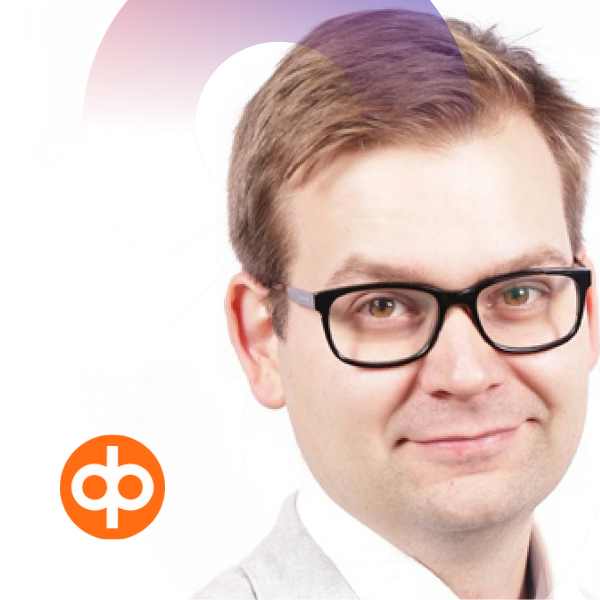During our recent online event on Business Design & Venture Building, four innovation leaders shared their key learnings running innovation labs and programs.
Here’s a summary of their talks.
Kristian Luoma (OP Financial): How to Maximize Innovation in an Innovation Lab
 Kristian Luoma is the Head of OP Lab at OP Financial, Finland’s biggest financial group serving over 4.2 million customers. Over the last four years of leading the lab, some projects have been stellar success stories. Others have failed miserably. He offers these five tips to help keep innovation practical.
Kristian Luoma is the Head of OP Lab at OP Financial, Finland’s biggest financial group serving over 4.2 million customers. Over the last four years of leading the lab, some projects have been stellar success stories. Others have failed miserably. He offers these five tips to help keep innovation practical.
Learn the Hype Cycle
When it comes to innovation, you don’t want to focus on anything that is at the peak of enthusiasm. While it’s tempting to focus on the next new thing, be patient and jump on the train later.
By letting new tech simmer, you can learn as much as possible about it before you double down on your investment. You’ll be able to bet on the tech that people are actually going to adopt, rather than a passing trend.
Study the Innovation Diffusion Cycle
Different customers are going to adopt technology in different ways, but you’ll want to focus on the innovators and early adopters to know where to go next.
Remember that with different needs, there will be different innovators and early adopters. It won’t always be young people who adopt your innovation first. Find those lead users who are innovating without the tools that you want to build. If they are already doing it, find out how you could make it easier and faster.
Focus on One Thing at a Time
Dave McClure’s growth funnel theory includes the stages of Acquisition, Activation, Retention, Referral, and Revenue. Luoma encourages his team use this framework by focusing on one thing at a time.
First, prove you can acquire the customers. Then prove that you can activate them. Later on, you can focus on things like revenue and referral. Labs often try to focus on too many things at a time, and that makes things messy.
Don’t Create Anything the Organization Doesn’t Want to Operate
The optimal solution is the one that meets the needs of the user as well as delivers what the stakeholders want. One without the other is a recipe for failure. Kristian’s team learned this while working on a project turning OP branches into co-working spaces.
What they didn’t stop to consider, though, was whether the branches wanted to operate as co-working spaces. They implemented it without understanding that the organization wanted to do something else. The project was a failure.
Talents Are Not All Created Equally
Innovation is a team sport, but weird individuals are the ones who plant the seeds that grow. Find the weirdos who are excellent innovators. Use them to recruit, too. After all, the best talent will find the best talent.
Kristian finally advised to always remember success stories take longer than you think, so don’t rush the process.
Lisa Besserman (Indeed): Pitching Innovation: How to Foster a Culture of Intrapreneurship
 Lisa Besserman is the Head of Program, Global Incubator at Indeed.com. She’s overseen 36 projects in the incubator and is a recognized leader within the innovation space. She’s successfully created a culture of innovation within Indeed. She shares the building blocks that helped to create and foster it.
Lisa Besserman is the Head of Program, Global Incubator at Indeed.com. She’s overseen 36 projects in the incubator and is a recognized leader within the innovation space. She’s successfully created a culture of innovation within Indeed. She shares the building blocks that helped to create and foster it.
Identify Entrepreneurs Within the Organization
You don’t need to create entrepreneurs, you need to identify and encourage them. Let them self-select by communicating the current participation opportunities within existing innovation initiatives. Managers are key in recognizing and fostering this talent, too.
Empower Employees to Innovate
Teach employees how to effectively pitch their ideas. A lot of people have ideas, but it can be difficult to articulate them and take on the product mindset.
To empower employees Indeed conducts pitch workshops once per quarter. They teach them how to build MVPs, instill data-driven decision making, and provide info on user testing.
They also connect product manager mentors with employees around the world. That way when they come to senior leadership with their idea, they have all the tools they need to effectively pitch their idea.
Increase Risk-Taking Quotient
Failure is a part of new product development, and it’s something people should celebrate. To do this, Indeed created a shut-down initiative. When a project shuts down, the team shares the learning that came from the experience and celebrates the wins they had. Teams host Q&A events so those who worked on the project feel that they’ve contributed to the greater good despite the end of their project.
Cross-Functional Collaboration
The core team for each incubator project includes marketing, user experience, program management, product management, software engineering, sales, and legal. The success rate of initiatives when teams have cross-functional collaboration built-in is 59%. When there is no cross-functional collaboration, the success rate drops to 36%.
Provide Resources
Indeed offers a variety of resources for potential intrapreneurs. They have a content hub for sharing documentation and resources. There is also a repository of learnings, a library, innovation training, and a professional development budget.
When new founders come to the incubator they get book recommendations to learn more about startup principles and product development fundamentals. They also teach people about agile methodologies when they are in the early stages of building out their products.
Executive Support
Lisa says that executive support is fundamental for a successful innovation program. Executives can sponsor innovation programs and offer mentorship. They can also acquire new products into their core portfolio. Executive-level support allows for autonomy and agility in innovation.
Salman Taj (Ericsson): Innovation in a Big Company: What Has Worked?
 Salman Taj is the VP of Innovation and the head of Ericsson ONE, Americas, Ericsson’s innovation incubator. They’ve developed three spin-offs in the last two years by providing space for entrepreneurial employees to develop products and ideas in-house. Here is what he says has worked for this global institution when it comes to fostering in-house innovation.
Salman Taj is the VP of Innovation and the head of Ericsson ONE, Americas, Ericsson’s innovation incubator. They’ve developed three spin-offs in the last two years by providing space for entrepreneurial employees to develop products and ideas in-house. Here is what he says has worked for this global institution when it comes to fostering in-house innovation.
ONE’s 5i Process
- Initiation. This is where they collect and crowdsource ideas. Before they move on, the team must determine whether the problem is clear and whether it’s big enough. They are only after big ideas.
- Ideation. During this phase, they evaluate the value of the project and then come in to pitch it. Before it moves on from this stage, the team must demonstrate the completion of customer validation, that there is clarity on the MVP, and whether there are trial customers.
- Incubation (MVP). Here, they implement the MVP with trial customers and learn from that experience. They determine whether they should pivot or continue with the project. They will need to show that there is a customer pipeline, the business is viable, and they have the team to support it before they move on.
- Incubation (Industrialization). The second part of the incubation stage will look at scaling the project. Can it scale to a successful level? If so, it will go to an acceleration board where they’ll determine if the project should stay within the business or spin out on its own.
- Ignition. In this phase, the team will determine if the project is sustainable. It may receive a cash injection based on its achievements.
What Has Worked for ONE?
Executive support and championship: It’s critical for an incubator program within a large company to have executive support. You need a champion within the executive level to take it forward and help avoid roadblocks
Find solutions to real problems: There is no point in building something that’s not solving a problem. While a simple concept, it’s not something that comes naturally to people. Building a solution without understanding the problem won’t result in a successful project.
Keep it simple: Starting an innovation program within a big organization can get complicated. Making it complicated will result in intimidating your internal customers. Simplicity creates an environment of trust where people jump into the program without a high barrier to entry.
Be transparent: At ONE, all evaluation sessions are broadcast so people can see the real-time discussion as its pitched. They then release all the data and information once they make a decision about the project. That way there are no alternative theories about why something is or isn’t getting support. This builds trust within the company.
Let things mature: There is a tendency to look at a successful MVP and immediately direct them to a new unit or spin them out into a new business. These MVPs aren’t usually ready to survive and scale on their own. Let them mature within the business and learn more about the market before they move on.
Thorsten Lambertus (Fraunhofer): Intrapreneurship Growing Up at Fraunhofer
 Thorsten Lambertus is the Institute Director at Fraunhofer, Germany’s high-tech powerhouse and R&D giant. His innovation lab’s goal was to activate the entrepreneurial spirit within the organization. Over the life of the lab, they went through a lot of growing pains. He shares what they learned along the way.
Thorsten Lambertus is the Institute Director at Fraunhofer, Germany’s high-tech powerhouse and R&D giant. His innovation lab’s goal was to activate the entrepreneurial spirit within the organization. Over the life of the lab, they went through a lot of growing pains. He shares what they learned along the way.
Infancy
In the lab’s infancy stage, they decided to follow Google’s 20% rule. They gave researchers one day a week to work on a passion project, and the lab would give them €15,000 to fund it.
Initially, the lab had three applicants. They gave the projects the money and sent them out to bring back something innovative. When they brought the teams back to learn what they’d done with their €15,000, only two of them had been working on the project and generating results. The third project stated that the budget wasn’t big enough and they had other things to work on.
What did they learn?
• Money doesn’t get people excited
• Without guidance, there are no relevant results
• It’s better to start in a niche
Childhood
In this phase, Thorsten’s team developed a 12-week incubation program. Over the course of the 12 weeks, the team provided intrapreneurs with guidance and education on how to be entrepreneurial. They also built a network of ambassadors and roadshows to educate and guide the intrapreneurs. At the end of the 12 weeks, they had a demo day showing off the projects.
What did they learn?
• Building up a stable flow of new innovations is hard
• You have to tailor your program to your specific organization
• Internal competition happens and you’ll have to deal with it
Adolescence
Eventually, the lab became funded out of headquarter’s budget. That meant it was no longer a funky research project, but considered a core part of the business. The firewall against internal politics was gone. The team decided to shift their focus from educating researchers to creating more tech transfers. They learned that researchers are good at researching, but they might not be good at entrepreneurship.
What did they learn?
• Experimentation is slower when you are a core business
• Shifting mindsets is hard on your team
• It’s difficult to merge internal and external cultures
Fraunhofer Lab’s Achievements
The lab has supported more than 200 projects in five years. During that time, 38% of the teams achieve their tech transfer or make it onto the market. So it’s been a success, but building an effective program takes time.
Thorsten says the learning curve is steep, and more money won’t always be the right solution. When the checks are bigger, so is the pressure to deliver results.
Playbook Innov8rs Connect - Business Design & Venture Building
Get all summaries of 16 sessions from our recent online event Innov8rs Connect Business Design - Venture Building on 12-13 May 2020 in one 90+ pages Playbook.


